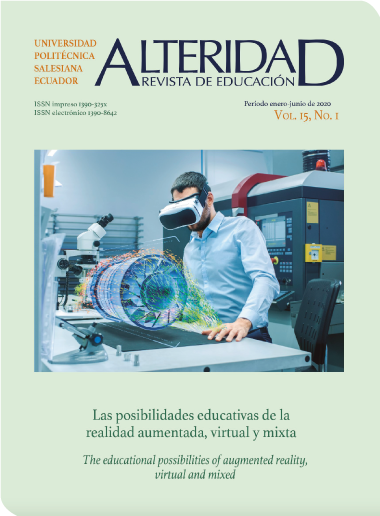The transcendence of Augmented Reality in student motivation. A systematic review and meta-analysis
Main Article Content
Abstract
The arrival of information and communication technologies (ICTs) in the education system has meant that many new resources of great didactic interest have reached the classroom. This is the case of Augmented Reality, a technology that has become popular due to its ability to combine virtual and real elements at the same time. This work has attempted to investigate the scientific literature to see if the application of Augmented Reality in the classroom promotes a motivational improvement in the student body of the various educational stages. For this purpose, the methodology corresponding to the systematic reviews and meta-analysis proposed by the PRISMA declaration was used, taking as data source the databases Scopus and Web of Science. A total of nine quasi-experimental methodologies were analysed around the measurement of the motivation variable. The results elucidated a favourable diagnosis to the experimental groups, so it could be inferred that experimentation in the classroom with Augmented Reality motivates the student body of different educational stages. Nevertheless, it is necessary to carry out a greater number of experiences with Augmented Reality in the classrooms in order to be able to establish an opinion around a more solid body of scientific work.
Article Details
Section
Central Theme
Authorship: The list of authors signing must include only those people who have contributed intellectually to the development of the work. Collaboration in the collection of data is not, by itself, a sufficient criterion of authorship. "Alteridad" declines any responsibility for possible conflicts arising from the authorship of the works that are published.
Copyright: The Salesian Polytechnic University preserves the copyrights of the published articles, and favors and allows their reuse under the Creative Commons Attribution-NonCommercial-ShareAlike 3.0 Ecuador license. They may be copied, used, disseminated, transmitted and publicly displayed, provided that: i) the authorship and the original source of their publication (journal, editorial and work URL) are cited; (Ii) are not used for commercial purposes; Iii) mention the existence and specifications of this license.
Copyright: The Salesian Polytechnic University preserves the copyrights of the published articles, and favors and allows their reuse under the Creative Commons Attribution-NonCommercial-ShareAlike 3.0 Ecuador license. They may be copied, used, disseminated, transmitted and publicly displayed, provided that: i) the authorship and the original source of their publication (journal, editorial and work URL) are cited; (Ii) are not used for commercial purposes; Iii) mention the existence and specifications of this license.

